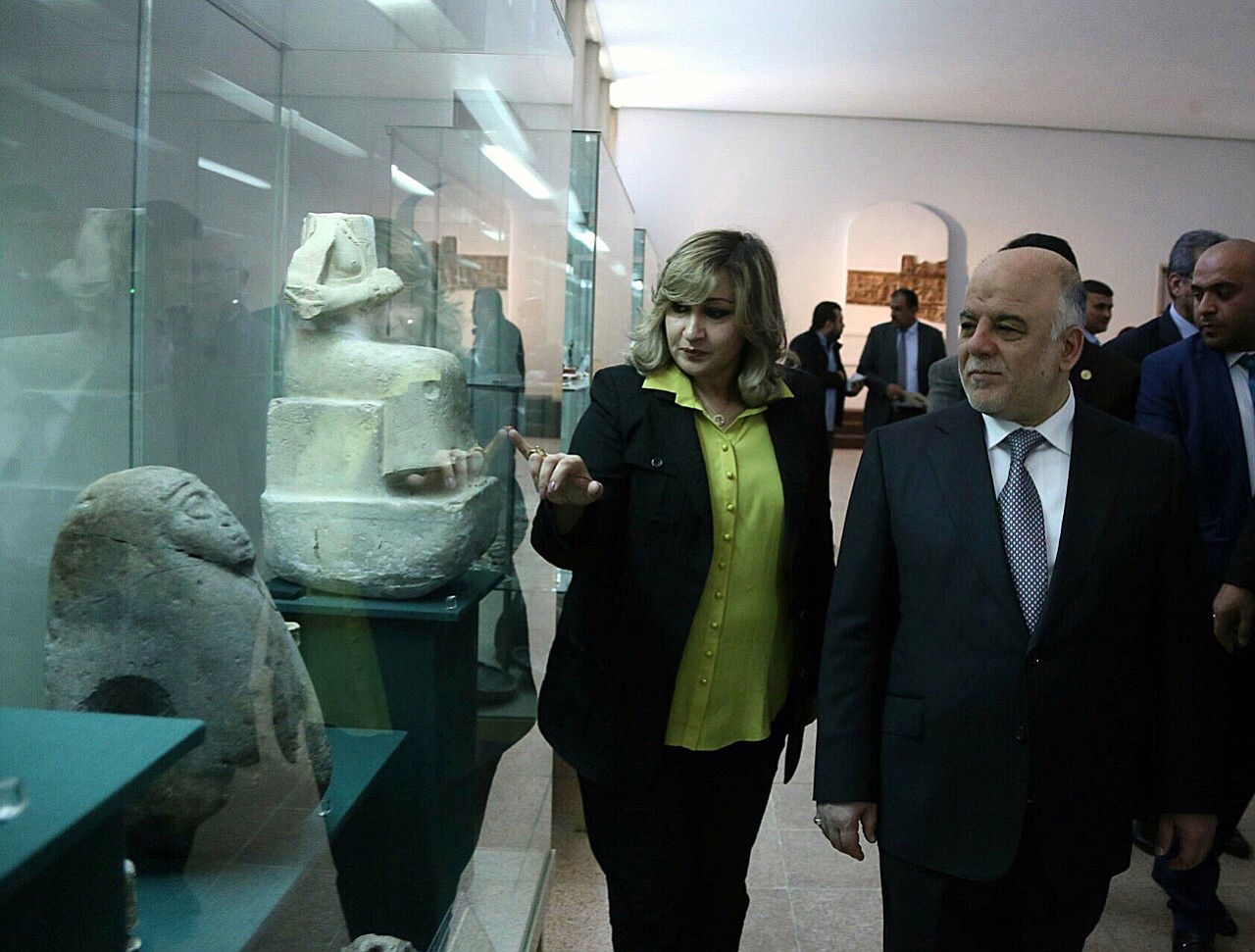BAGHDAD — Iraq’s national museum in Baghdad officially reopened to the public Saturday, 12 years after it was shuttered because of the looting of thousands of ancient artifacts in the days following the U.S.-led invasion.
As Prime Minister Haider al-Abadi cut the red ribbon at the Iraq Museum, officials said the decision to reopen ahead of schedule was intended to send a message of defiance to Islamic State militants who released a video last week showing black-clad men destroying museum statues in the northern city of Mosul.
Iraqi authorities have worked for years to recover some of the estimated 15,000 items stolen from the national museum in 2003, when looting went largely unchecked by U.S. forces. Some 4,300 have been returned, from countries including Lebanon, Jordan and the United States, according to Iraqi officials.
The contrast between images of the destruction in Mosul’s museum and the gleaming new display cases in Baghdad serves as a reminder that Iraq remains a country divided. While the extremists retain their grip in Iraq’s north and west, a growing sense of confidence is apparent in Baghdad, where a long-standing midnight curfew was lifted last month.
“Our hearts were broken when those artifacts were broken in Mosul,” said Qassim Sudani, a spokesman for the Ministry of Tourism and Antiquities. “Now the national museum has reopened, it will be a lung that allows the Iraqi people to breathe again.”
The Islamic State has systematically laid waste to ancient tombs and artifacts in areas the group controls. It maintains that pre-Islamic icons and statues are forbidden under its extremist interpretation of Islam. Still, officials suspect that the group has sold off items small enough to be smuggled out of the country on the black market.
The Baghdad museum will open its doors to the public on Sunday, following years of delays due to security concerns. Dignitaries and officials have been able to visit since 2009.
Among the items on display will be the alabaster Warka Vase, found in the ruins of the ancient Sumerian city of Uruk and dating back to about 3000 B.C. It was wrenched from its display case in April 2003 during the ransacking, prompting outraged questions about why coalition troops didn’t do more to protect the museum from looting. The vase was returned in more than a dozen pieces in an amnesty a few months later.
The Mask of Warka, another priceless, recovered artifact that has been described as one of the oldest renderings of the human face, will also join the permanent exhibition, along with some 10,000 other items, said Ahmed Kamel Mohammed, general manager of Iraq’s museums. Thousands of items were protected from the 2003 sacking after being hidden by museum staff.
Statues of winged Assyrian bulls, similar to one at Nergal Gate in Mosul that Islamic State militants sledge-hammered in their video, are also featured in the freshly painted halls.
But officials remain mindful of the thousands of precious missing artifacts.
“We are still working tirelessly to get them all back home,” Mohammed said.
Washington Post correspondent Mustafa Salim contributed to this report.



